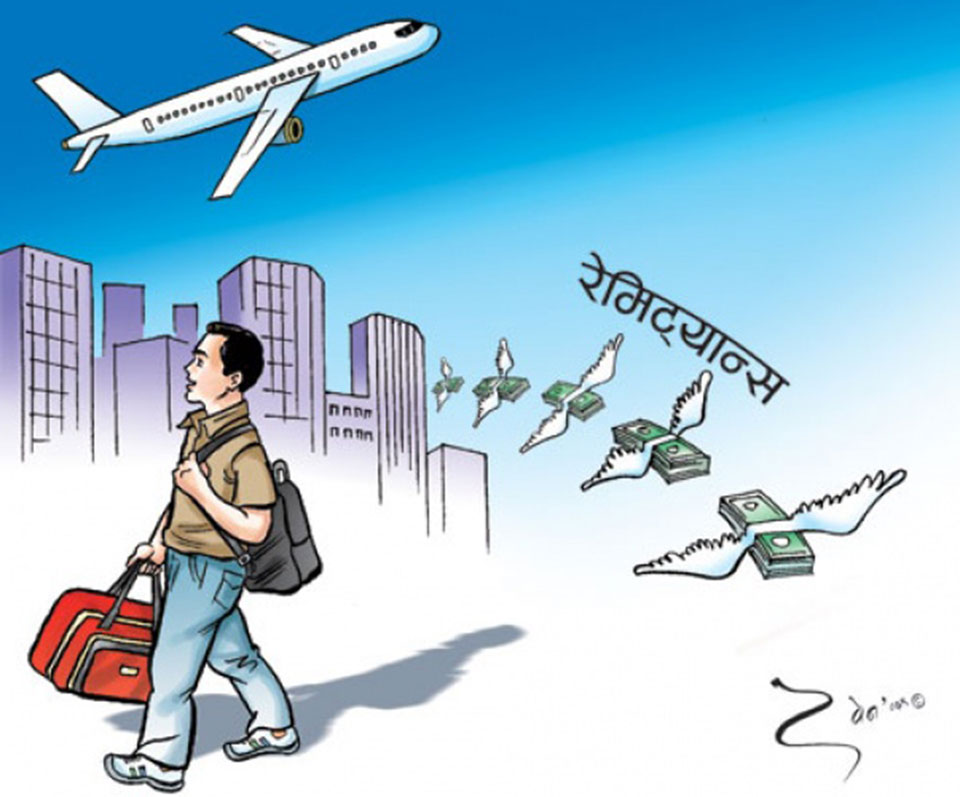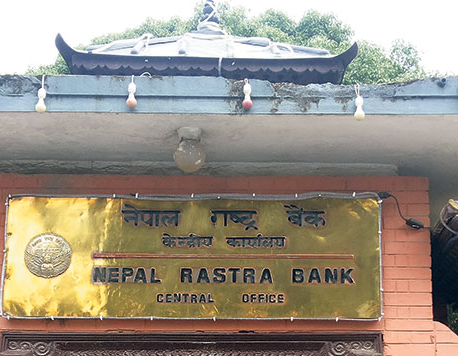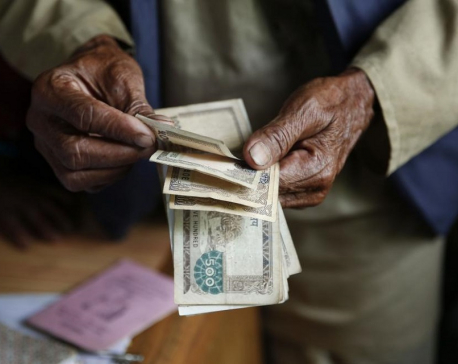
OR
NRB’s macroeconomic situatiton report
Remittance swells on strong dollar
Published On: October 31, 2018 09:46 AM NPT By: Republica | @RepublicaNepal

Workers’ transfers jumped by 33.4 percent to Rs 154.2 billion
KATHMANDU, Oct 31: Nepal received a total of Rs 154.2 billion in remittances in the first two months of the current fiscal year 2018/19.
The workers’ transfer has gone up by whopping 33.4 percent in the review period compared to the corresponding period of the last fiscal year 2017/18, according to the Current Macroeconomic and Financial Situation of Nepal (Based on Two Months’ Data of 2018/19) released by Nepal Rastra Bank (NRB) on Tuesday.
The country had received Rs 131.43 billion in the first two months in the last fiscal year.
The remittance growth offers a relief to government officials and policymakers who were earlier worried with the slowdown in the growth rate of money sent by Nepali workers from abroad.
Though the number of workers flying abroad has been dropping in recent months, the remittance has been growing. Experts attribute this to increased transfer by workers for Dashain, Tihar and Chhath festivals, appreciation of the US dollar, and the government’s crackdown on informal transfers like Hundi.
“The main factor for the surge in remittance growth is the recent appreciation of the US Dollar compared to our local currency,” Suman Pokharel, the CEO of IME -- a remittance company -- told Republica.
The stronger US dollar not only increases the remittance in domestic currency term, but also encourages people abroad to send more money to the country, according to observers.
“Workers seemed to have been tempted by higher exchange rate to send money to their families. As exchange rate has gone up for them, they are sending their wages and savings to Nepal. Many workers even borrow money and send to Nepal to reap the windfall gains,” said Pokharel.
While remittance growth climbed up by 33.4 percent in Nepali rupee term, it increased by only 22.3 percent in US dollar term. Such growth in dollar term was 5.2 percent in the corresponding period of the last fiscal year.
The stronger US dollar in recent months has brought windfall gains to many remittance-receiving households. In the first two months of FY2018/19 (mid-July to mid-September), the value of US dollar went up by nearly 5 percent. Remittance flow tends to grow between August and November as migrant workers send money to their families back home to celebrate festivals like Teej, Dashain, Tihar and Chhath.
The growing presence of domestic money transfer companies in countries where Nepali workers are concentrated have also promoted the use of formal channel for remitting money home. “If you look at the data, you can see that remittance flow from countries like South Korea and India has increased significantly. This is because many Nepali workers, who were earlier hesitant to send money from informal channels are now using remittance companies,” said Pokharel.
BOP situation worsens
KATHMANDU, Oct 31: Despite remittance growth, the country’s balance of payment (BoP) position has worsened in the second month of FY2018/19.
According to data released by Nepal Rastra Bank (NRB) on Tuesday, the BoP slipped to a deficit of Rs 25.45 billion in mid-September this year. Such deficit was Rs 5.87 billion in the same month last year.
In the first month of FY2018/19, the country’s balance of payment was in deficit of Rs 24.77 billion.
The imbalance in the balance of payment means that Nepal imported more goods, services and capital than it exported in the first two months. The alarming rise in imports has put pressure on the balance of payment of the country. The rise in imports has more than offset the positive effect on the payment position.
You May Like This

Remittance inflow jumped 29% to Rs 516 billion in seven months
KATHMANDU, March 16: Nepal received a total of Rs 515.55 billion in the first seven months of the current Fiscal... Read More...

The Cost of Remittances
The unproductive use of remittances, combined with inflation in health, education, and consumer goods, and the possibility of a real... Read More...

Outbound Nepalis spent Rs 68 billion in nine months
KATHMANDU, May 23: Nepalis travelling abroad spent a total of Rs 67.94 billion in first nine months of the current... Read More...










Just In
- NRB introduces cautiously flexible measures to address ongoing slowdown in various economic sectors
- Forced Covid-19 cremations: is it too late for redemption?
- NRB to provide collateral-free loans to foreign employment seekers
- NEB to publish Grade 12 results next week
- Body handover begins; Relatives remain dissatisfied with insurance, compensation amount
- NC defers its plan to join Koshi govt
- NRB to review microfinance loan interest rate
- 134 dead in floods and landslides since onset of monsoon this year








Leave A Comment